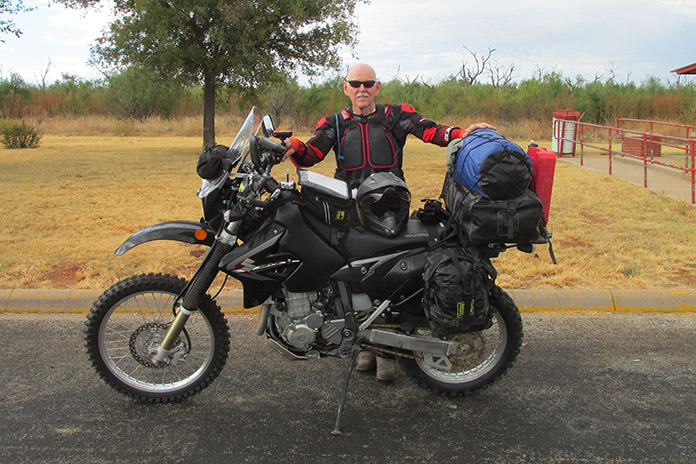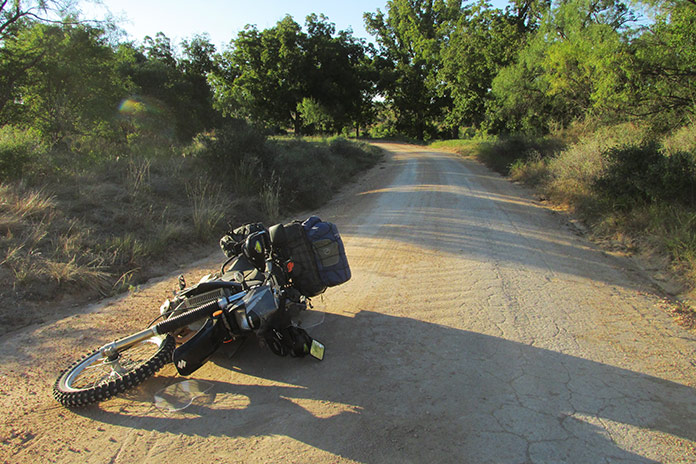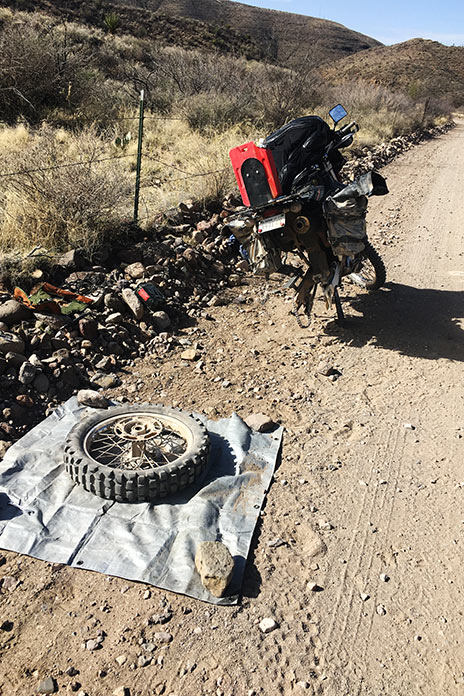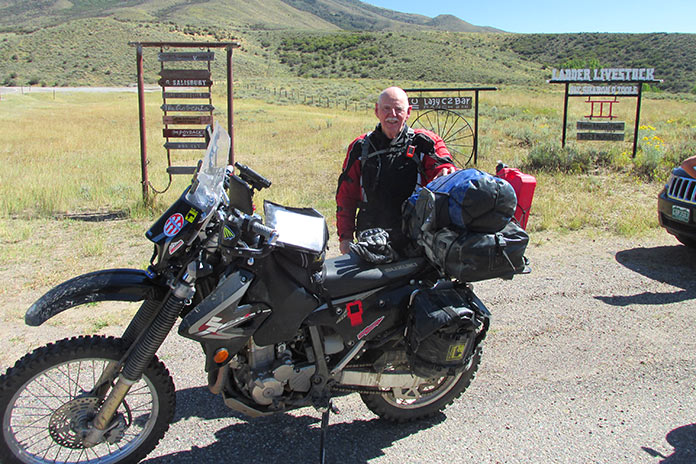
 |
|
|
#1 |
|
All the news that's fit to excerpt
Name: newsie
Location: who knows?
Join Date: Jun 2008 Motorcycle(s): only digital replicas Posts: Too much.
|
[ridermagazine.com] - Motorcycle Tips: Riding Alone Off-Road
The following motorcycle tips article was the Exhaust Note feature in Rider‘s adventure-themed November 2022 issue, which also included stories on the TransAmerica Trail, Trans Canada Adventure Trail, and the Trans Euro Trail. Call me crazy, but in the past decade I’ve ridden solo for half of the TransAmerica Trail, three Backcountry Discover Routes (Colorado, […]
The post Motorcycle Tips: Riding Alone Off-Road first appeared on Rider Magazine.  The following motorcycle tips article was the Exhaust Note feature in Rider‘s adventure-themed November 2022 issue, which also included stories on the TransAmerica Trail, Trans Canada Adventure Trail, and the Trans Euro Trail. Call me crazy, but in the past decade I’ve ridden solo for half of the TransAmerica Trail, three Backcountry Discover Routes (Colorado, Idaho, and New Mexico), the Oklahoma Adventure Trail, and the Lone Star Loop. Motorcycle forums often have threads debating the pros and cons of riding solo off-road. Some think it’s foolish; others think it’s the only way to ride. When you’re on your own in the backcountry, help may not be readily available if you need it. But there are also benefits to solo adventures – as long as you use some common sense.  Riding with like-minded friends is great, but the more riders, the more logistical complexity due to different schedules and preferences for meals, lodging, etc. Then there’s the ride itself – when to get started each day, how far to ride, and where and when to stop. One of the key advantages of a solo ride is its simplicity. You’re the boss. You’re the only one who makes decisions (and has to live with them). Take breaks, take more photos, stop and smell the roses – it’s up to you. Another advantage for us older guys is that it beats not riding. For me, I either ride solo or I don’t ride at all. I’m 75, and most of my friends have quit riding off-road for various reasons. And younger guys with jobs and families often don’t have the flexibility to go for a ride on a Tuesday or to take a couple weeks off for a long trip. Some would argue that you can’t share the adventure with anyone if you ride alone. My solution is to take lots of photos and record descriptive audio notes on my smartphone throughout the day. Once back home, I convert these into a printed ride report to share with family and friends.  Motorcycle Tips for Off-Road Riding Alone Communicate: You should always let people know where you will be riding, but that’s not enough. You should also carry a Garmin inReach or SPOT satellite tracker/communicator that includes two-way text messaging. Carry it on your person at all times since it won’t do you any good if it’s on your bike 50 feet down a ravine. Establish a periodic check-in routine via your mobile phone or tracker with those aware of your ride. Ask someone to periodically check your tracker “share page” with the understanding that if your last track point hasn’t moved in a few hours and you haven’t messaged, you probably need help. In addition, they should have the appropriate number to reach search and rescue. Plan Your Route: Choose routes that are within your skill set. GPS tracks are great, but paper maps are good as a backup and to familiarize yourself with “bail out” routes. In case of an urgent situation, such routes provide the shortest path to pavement or nearby towns. Paper maps also give you the big picture, so during your ride, stop occasionally and figure out exactly where you are. Ride the Right Bike: When riding solo off-road, it’s critical that you’re able to pick your bike up by yourself when (not if) you drop it. Most of us have seen demonstrations of 100-lb riders picking up 800-lb motorcycles by crouching down with their lower back against the seat, holding the handlebar and the rear fender, and “walking” the bike upright. It’s a valuable technique to know and practice. In off-road situations, you may be in sand, gravel, or some other challenging situation, so I also carry a strap that I can hook under the bike to adjust my lifting position. When you’re off-road, a lighter motorcycle is always better in terms of maneuverability and the ability to pick it up, which you may have to do multiple times.  The author and his Suzuki DR-Z400 dual-sport. The author and his Suzuki DR-Z400 dual-sport.Your bike should also be well-maintained in terms of tires, chain, brakes, bolt tightness, lights, battery, fuel, cables, etc. Know your bike and how to troubleshoot common problems. Carry a comprehensive toolkit and be able to fix a flat. Even if you have a range of 200 miles, carry a RotoPax or other auxiliary fuel container. Protect Yourself: Riding solo means ATGATT (All The Gear, All The Time). If you fall when you’re alone, quality safety gear may determine whether you ride the bike out or are flown out in a helicopter (with a costly bike recovery). A good helmet, armored apparel, durable gloves, and adventure/off-road boots are necessities. Carry a hydration pack, extra snacks, sunscreen, a first-aid kit, and basic emergency supplies. Ride Smart: Everyone’s instinct for self-preservation has a different calibration, but when riding solo off-road it’s better to err on the side of caution. If you come to a section and hear a warning bell in your head, consider turning around for an alternate track. Get a “Ride Right” sticker from RideBDR.com and make it standard practice. Riding far right on dirt roads, over hills, and around blind curves has saved me many times. Cover the front brake lever with at least one finger and practice emergency stops. Keep your mind focused on your ride and your speed appropriate for visibility. Obey rules and laws, stay off private roads, and slow down around houses and livestock. Stuff Happens: What should you do if you get hurt or stranded? Don’t panic! Assess and evaluate. Check for injuries, check the bike for rideability, consult your map, and weigh your options. Carefully consider: “Do I ride, do I walk, or do I wait?” If you hanker for adventure and long to see what’s over the next hill, a solo off-road ride may be just what you need. The post Motorcycle Tips: Riding Alone Off-Road first appeared on Rider Magazine.
__________________________________________________
I'm a bot. I don't need no stinkin' signature... |
|
|

|
 |
 Similar Threads
Similar Threads
|
||||
| Thread | Thread Starter | Forum | Replies | Last Post |
| [ridermagazine.com] - Motorcycle Tips: Back Brake Benefits | Ninjette Newsbot | Motorcycling News | 0 | December 2nd, 2022 08:03 AM |
| [ridermagazine.com] - Himalayan Cliffhanger | Riding India?s Death Road | Ninjette Newsbot | Motorcycling News | 0 | August 3rd, 2022 07:43 AM |
| [ridermagazine.com] - Riding the Motorcycle Century | Ninjette Newsbot | Motorcycling News | 0 | June 14th, 2022 04:14 AM |
| [motorcycle.com] - New Rider: 5 Tips For Riding In The Rain | Ninjette Newsbot | Motorcycling News | 0 | March 22nd, 2018 01:50 PM |
| 20 Pro Motorcycle Roadracing Riding Tips | Motofool | General Motorcycling Discussion | 3 | July 15th, 2014 08:46 PM |
| Thread Tools | |
|
|